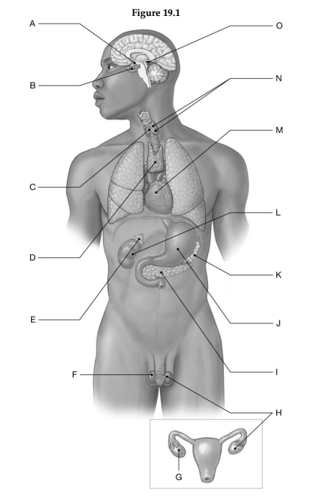The tissues of cardiac muscle have unique structures known as
A) circular muscle fibers.
B) abundant elastic fibers.
C) intercalated disks.
D) pacemaker cells.
Answer: C) intercalated disks.
You might also like to view...
The term ductus venosus refers to ________
A) damage to the valves in the veins, leading to varicose veins B) a condition of the aged in which the arteries lose elasticity C) a fetal shunt that bypasses the lungs D) a special fetal vessel that allows umbilical blood to bypass the liver
Using the figure above, identify the labeled part.

1. Label A: ______________________________
2. Label B: ______________________________
3. Label C: ______________________________
4. Label D: ______________________________
5. Label E: ______________________________
6. Label F: ______________________________
7. Label G: ______________________________
8. Label H: ______________________________
9. Label I: ______________________________
10. Label J: ______________________________
11. Label K: ______________________________
12. Label L: ______________________________
13. Label M: ______________________________
14. Label N: ______________________________
15. Label O: ______________________________
Enlargement of the adrenal glands is termed:
A) adrenitis B) adrenoma C) adrenomegaly D) adrenalectomy E) adrenalotomy
Which statement is incorrect?
a. The "iodide pump" of the follicular cells is important for thyroid hormone production. b. Thyroid hormones are formed within a much larger molecule called thyroglobulin. c. Thyroid hormone synthesis is greatly stimulated by the presence of TSH. d. A two-hour supply of thyroid hormone is stored in the lumen of the thyroid follicles. e. The coupling of two DIT molecules yields thyroxine.